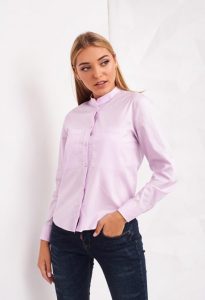 Shirt: how she appeared in the women’s wardrobe.
Shirt: how she appeared in the women’s wardrobe.
In the time of Kievan Rus, a women’s shirt was an element of underwear – no one should have seen it; they put a shirt on the body, under other clothes. But no one forbade decorating it with embroidery. Over time, the requirements for shirts changed – from the countries of Western Europe came the fashion for a restrained cut, buttons and cufflinks, cuffs, strict collars, and only men began to wear these clothes. Women’s shirts also transformed – there appeared lace and a magnificent collar, decorative elements, an exquisite silhouette. The situation changed in the 70s of the 20th century: emancipation influenced the fashion world, and women began to prefer comfortable and versatile clothes, instead of romantic-impractical. Gradually, the shirt became a familiar part of the women’s wardrobe – without it, it is difficult to imagine the business and everyday image of a lady of the 21st century.
How to wear a women’s shirt.
Since a women’s shirt has more signs of belonging to men’s clothing, images with it should be based on the contrast of elegance and femininity. So, the clear lines of the silhouette of the shirt can be complemented by a light extended to the bottom or flat miniskirt.
In addition, there are certain rules for the combination of shirts of different colors with the “bottom”:
1. White products are traditionally used in business, office style. Therefore, it will be optimally complemented – a knee-length skirt, slightly narrowed to the bottom, or classic trousers. The black and white ensemble will look as formal as possible.
2. A black shirt will help create a sophisticated, laid-back look, complemented by jeans or casual trousers made from natural fabrics. A similar set would be a great option for walking around the city, shopping, gatherings with friends in a bistro.
3. Women’s shirt – the most practical element of casual wear. However, instead of the usual combination with jeans or shorts, it can be used together with a white romantic skirt to the knee or even thrown over a thin dress (cotton or linen). It is important that the skirt or dress is sewn from a material that is thinner than the shirt itself so as not to burden the image.
